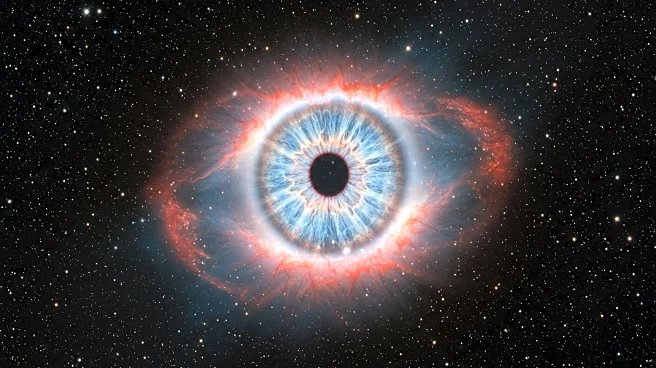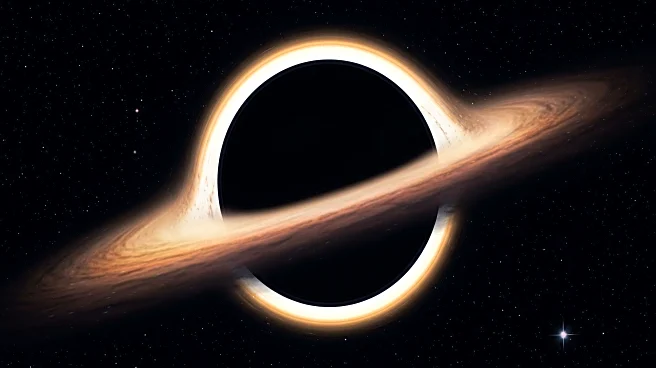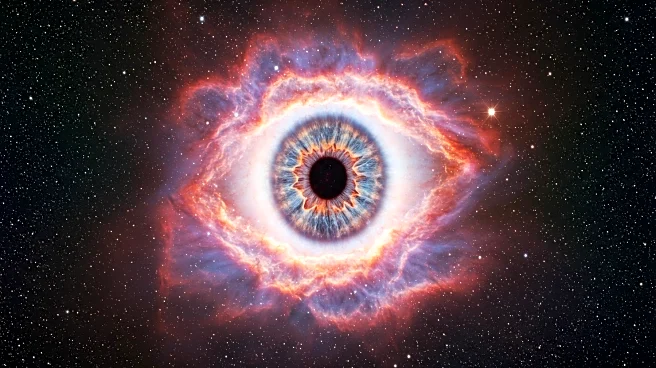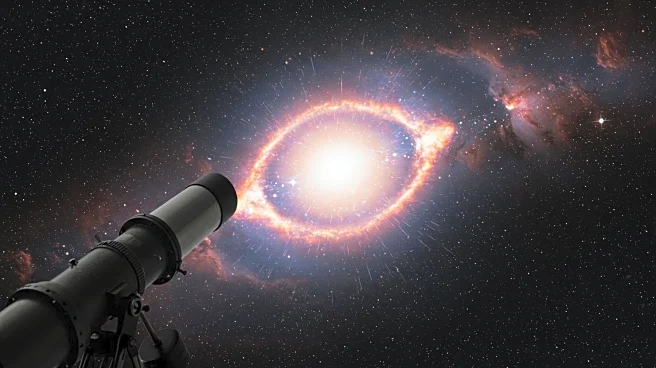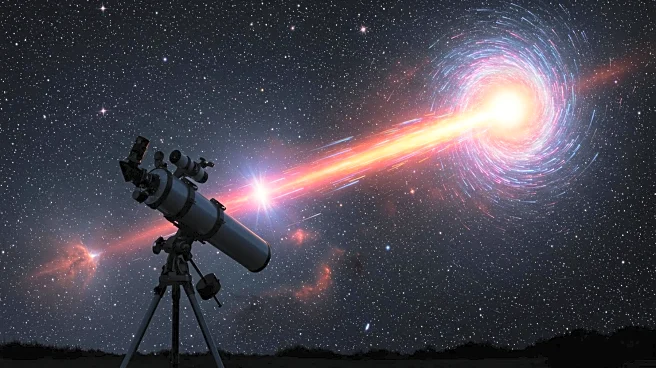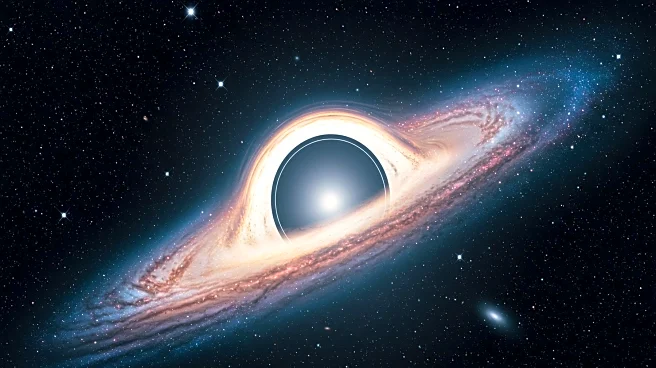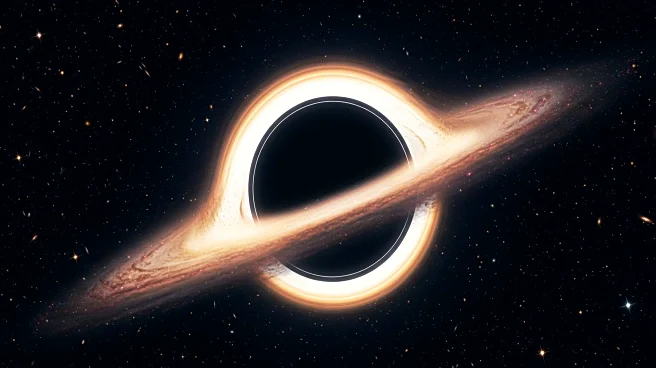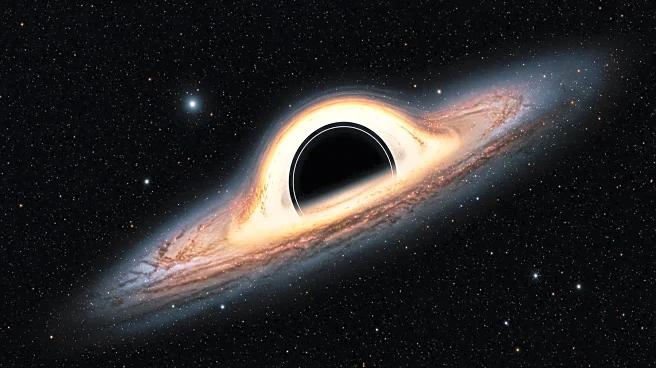What's Happening?
Astronomers have identified a blazar, dubbed 'PKS 1424+240,' located 7.4 billion light-years away, which emits cosmic radiation towards Earth. This blazar, nicknamed the 'Eye of Sauron,' features a supermassive black hole at its center, spewing jets of plasma. Despite its ominous name, the blazar poses no immediate threat due to its vast distance. The discovery has intrigued scientists, who are studying the blazar's unique characteristics, including its gamma-ray and neutrino emissions.
Why It's Important?
The discovery of PKS 1424+240 provides valuable insights into the behavior of blazars and their cosmic jets. Understanding these phenomena can enhance knowledge of supermassive black holes and their impact on the universe. The study challenges existing theories about the relationship between jet speed and brightness, offering new perspectives on cosmic radiation. This research contributes to the broader field of astrophysics, potentially informing future studies on black holes and cosmic structures.
Beyond the Headlines
The study of PKS 1424+240 may lead to advancements in understanding the magnetic fields of blazars and their influence on cosmic jets. The research could also shed light on the optical illusions created by cosmic alignments, offering deeper insights into the nature of the universe. The findings may inspire further exploration of the relationship between cosmic phenomena and their visual representations.
